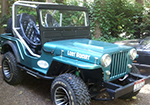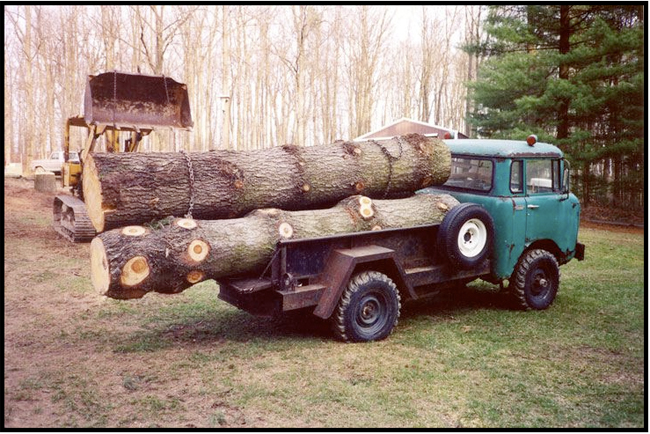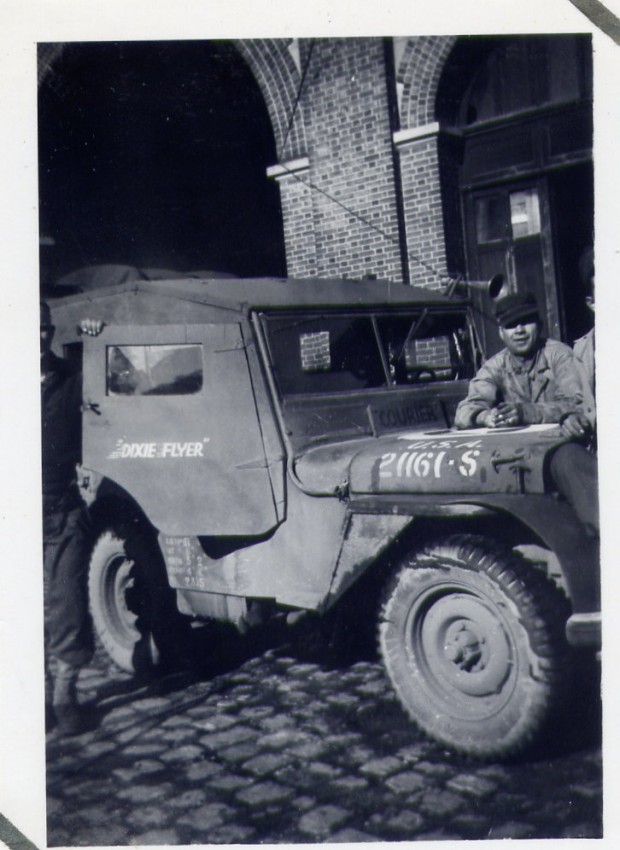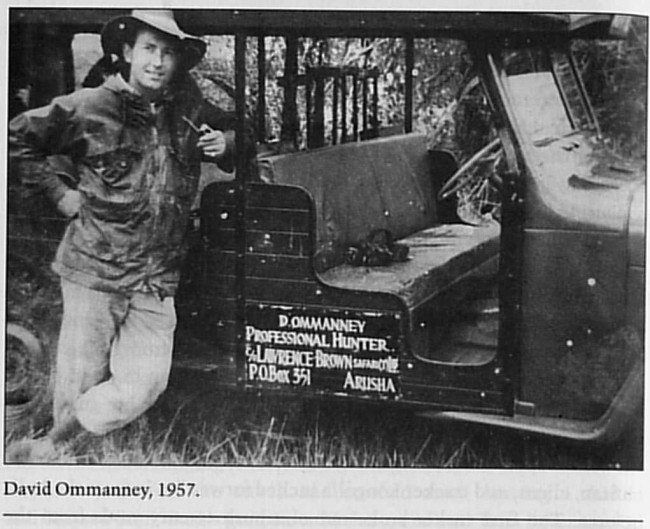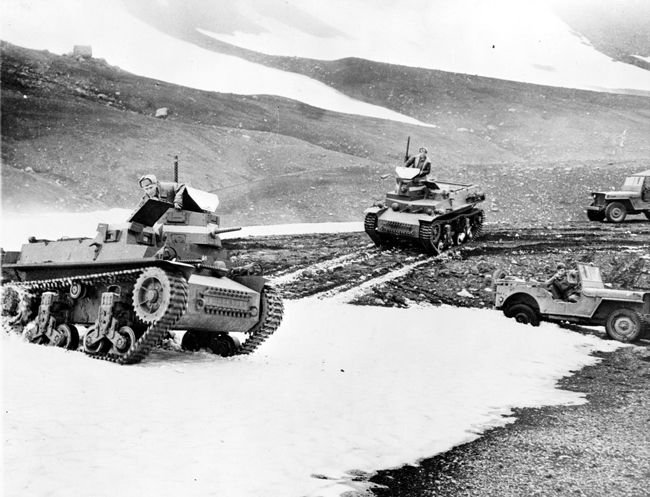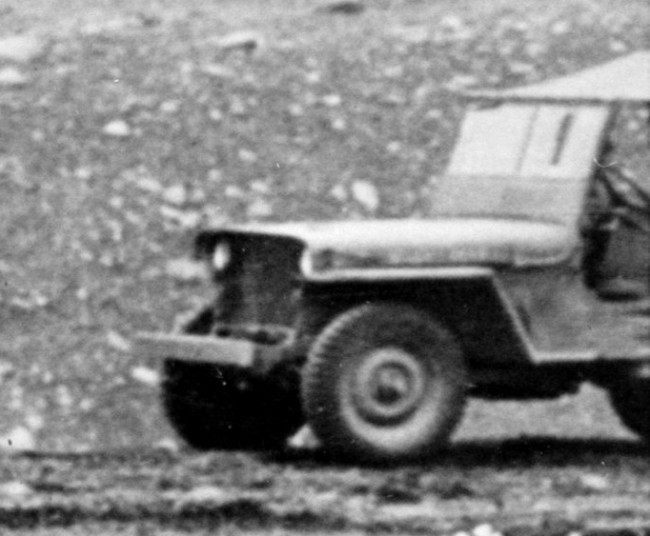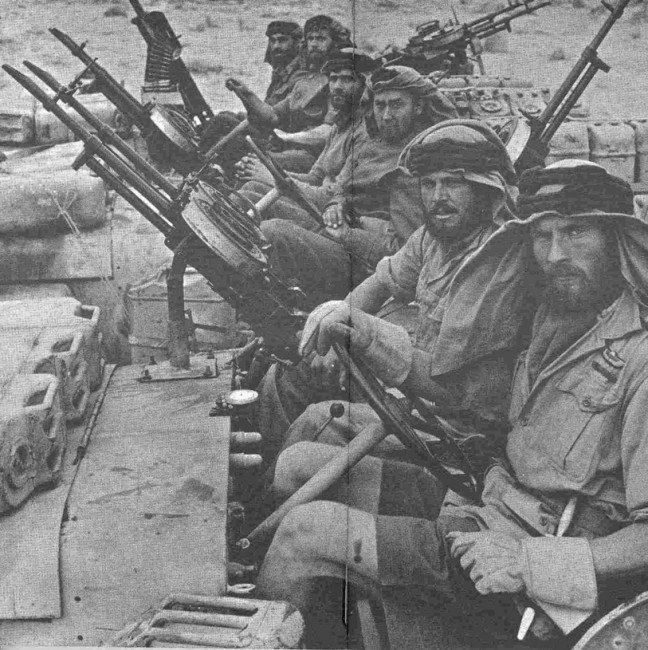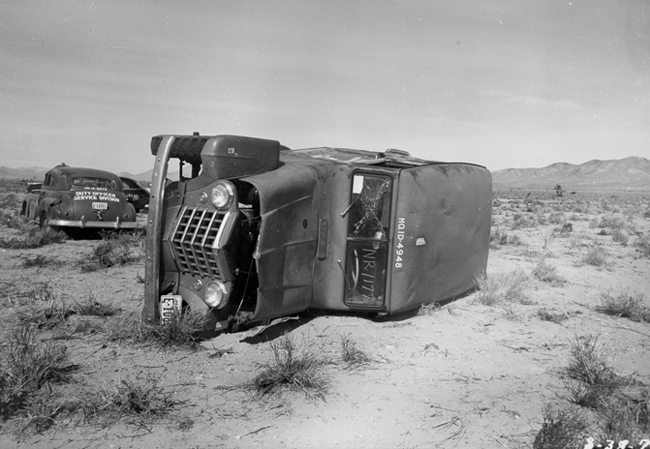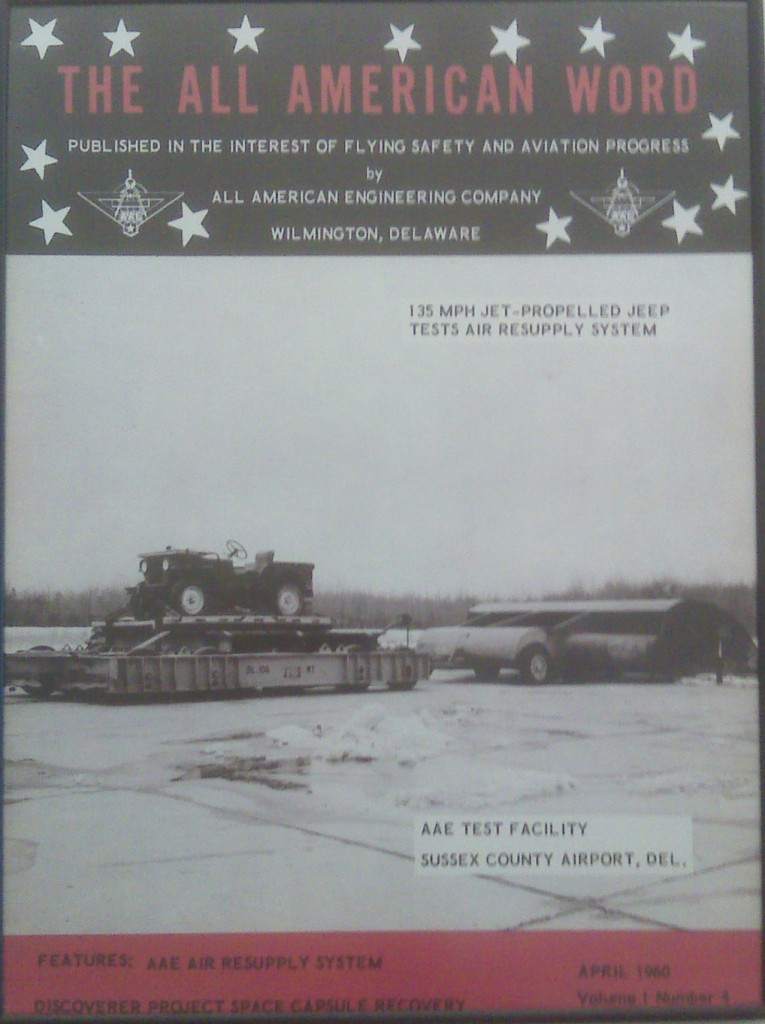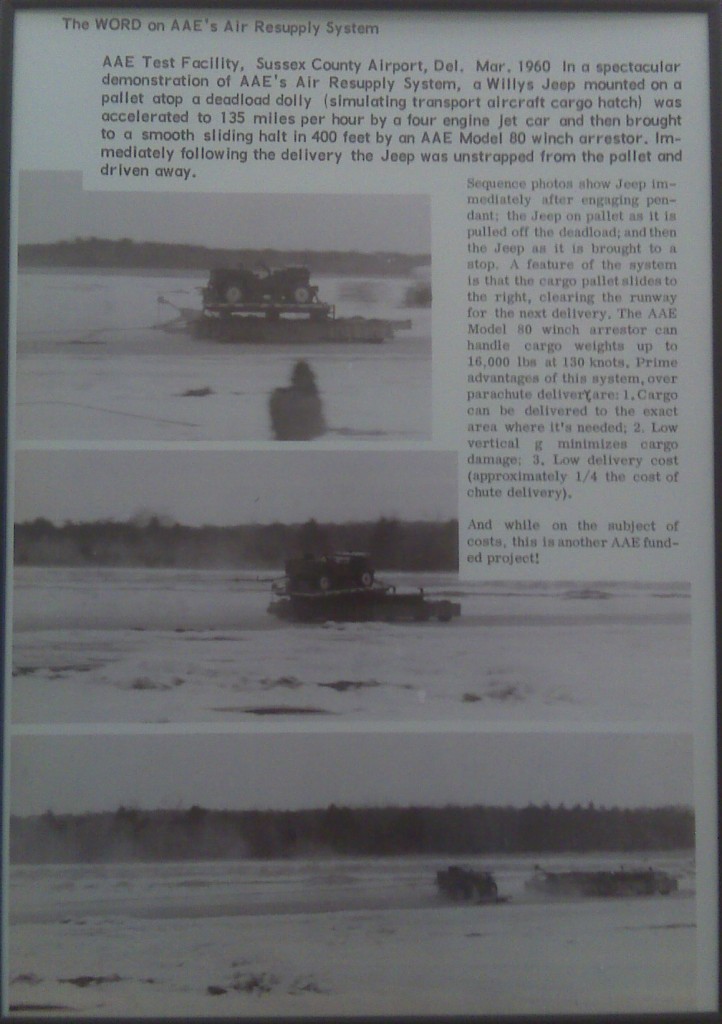Rich forwarded this image of an old FC with a big load from this website. Cool pic!
Old Images Research Archives
Another Tipped Jeep gets some work ….
A while back, Tom told me his dad has stories from WWII about flipping Jeeps on their side to work on them. After some digging, he managed to locate this for our viewing pleasure. Many Thanks Tom! See some other tipped jeeps here.
Stenciling Jeeps
Just a couple photos tonight from the Canadian Archives that show some stencilers at work.
1) Unidentified soldier stencilling numbers on the hood of a jeep, England, 21 December 1943.
A WWII Courier Willys
I don’t know anything about this particular jeep except that it is called the “Dixie Flyer”. It seems to be a modified MB with a ‘Courier’ sign in the front and some modifications to the fenders. It also appears to have a gas tank on the passenger side (I think that is what is sticking down under the passenger?). I found this image on the European Center of Military History’s Blog.
David Ommanney’s Hunting Wagon
David Ommanney appears to have been a well know big game hunter in Nairobi. As best as I can tell, this is a modified Willys Wagon. I have searched for a better image, but haven’t found one, though I found images of his later vehicle, a Landrover.
Color Photo of Willys MA
Here’s an unusual color photo of soldiers posing in a Willys MA from Life Magazine. I couldn’t find the original source of this on the Life Magazine site (I stumbled upon it through Google).
A Couple Slat Grille MBs and Marmon Herrington Tanks
Here’s an image from 1942 that Hugo spotted at wikipedia. The picture is high enough resolution that I was able to get a couple closeup pics as well.
S.A.S. Ready for Action
As I was researching yesterday’s article on the LRDG, I wanted to learn more about the Bagnold sun compass. After reading the explanation, I’m am quite sure that I’m not yet ready to be thrown in the middle of the desert with a Bagnold.
However, as I did my research this unique ‘time’ piece on a French Sundial website, I happened to see the amazing image below.
Surviving a Nuclear Blast …
Just a few Updates Tonight ….
As a kid in elementary school, I remember climbing under my desk as part of our emergency drills (earthquake, nuclear blast, bully avoidance). But, I always wondered what I would do if there wasn’t a desk to dive under!
Now I know the government had already been planning for a lack of desks. Thanks to this image Alex spotted on Wikipedia, I now see that I just have to locate a Willys Wagon and dive into it for safety. Sure, it might get blown over, but it would sure be more comfortable than getting trapped underneath my desk (unless I was trapped under my desk with my sweetheart from 6th grade Michelle, but that’s a whole ‘nother story)! See the expanded image here.
The 135 MPH Jeep Test
As I mentioned a couple days ago, a reader named Dave spotted this article and wanted to share it with readers. The article published in the 1960 edition of All American Word follows the All American Engineering Company Testing the air drop of a jeep by a pallet rather than via a parachute. To test this concept, the AAE built a special vehicle to mimic the landing of a jeep atop a pallet at speeds of 135mph. As you can see, the test was successful (at least the one captured in the photos).
Dave writes,”I was in Georgetown, DE recently which is a small town on the DelMarVa peninsula, and I ran across this very interesting use for a VEC CJ2A! I think it might fit your recent “museum” series of posts and I’m sure that your eagle-eyed readers will immediately recognize the historical relevance of this column shift speed demon! Apparently, this was a precursor to what is now known as LAPES or the Low Altitude Parachute Extraction System which is still taught, practiced and used today by our Military for forward area resupply missions. I watched C130 crews practice this (with varying levels of success)! at Whiteman AFB in western Missouri in the late 80’s. Fortunately by that point they were only destroying HMMWVs and military pickup trucks! The 8 of 10 or so operations that were succesful were really cool and you could certainly see the advantages of this type of operation.”
Click on the link below to see some closeups
